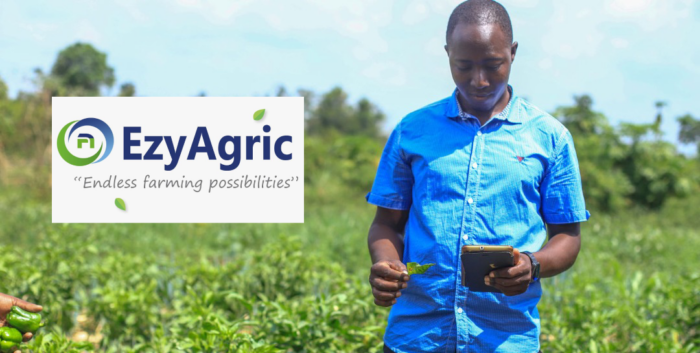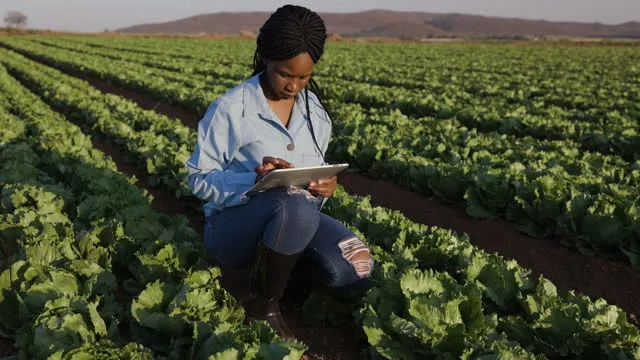INTRODUCTION
For economies such as Uganda’s which are heavily dependent on agriculture, Digitalisation in agriculture can be a sector game changer. Digitalisation for agriculture is the use of digital technologies, innovations, and data to transform business models and practices across the agricultural value chain.
AGRO-INDUSTRIALISATION UNDER UGANDA BUDGET

Budget reading financial year (FY 2022/23).
For the financial year (FY 2022/23) in the area of agro-industrialisation, it has been reported during the budget read of (FY 2024/25) that, “Government is committed to commercialising agriculture to enhance production and productivity and improve competitiveness of agricultural products in both regional and international markets and the following are some of the key milestones achieved;
i.Establishment of an afla-safe facility at Namulonge to help in the management of aflatoxins in cereals and nuts.
ii.Construction of a local anti-tick vaccine manufacturing facility, also at Namulonge, to produce vaccines against tick borne diseases. This will save the country USD1.1 billion which is lost annually due to tickborne diseases, and tap into the Shs 3 trillion regional market for meat and milk.
iii.Increased coverage of large-scale farmer mechanisation to 40 percent from 32 percent in FY 2022/23. A total of 240 tractors with all their accessories and additional 750 units of single-axle tractors were procured and distributed countrywide. Government also provided a number of policy/tax related support to the private sector to mechanise.”
Budget reading financial year (FY 2023/24).
For the financial year (FY 2024/25)Budget, the Goverment of uganda has allocated a total of Shs 1.878 trillion towards deepening agro-industrialisation with increased focus on commercialisation and value addition in agriculture. The priority areas include:
i.More investment in research and genetic development of selected value chains for animal, fish and crop varieties;
ii.Support for pest, vector and disease control and prevention. In particular I have provided an additional Shs 427.21 billion to procure and distribute 44 million doses of vaccines against foot and mouth disease. After the current vaccination exercise, farmers will access the vaccines through Government Stores by meeting 100 percent cost of the vaccine, while Government will cover the cost of vaccine administration;
iii.Support to NARO to roll-out the anti-tick vaccine, starting with 20 million doses;
iv.De-risking agriculture through supporting increased production and productivity as well as value addition for all the priority value chains;
v.More support for agricultural mechanisation;
vi.Increased investment in small and large irrigations systems, particularly solar-powered irrigation;
vii.Support for seed multiplication through the Uganda Prisons to increase seed availability for PDM beneficiaries; and
viii.Additional credit support to large-scale commercial farmers to ensure food security and increased exports.
The Role of Technology in Transforming Ugandan Agriculture
Agriculture is the cornerstone of Uganda’s economy, providing livelihoods for millions and contributing significantly to the country’s GDP. However, the sector faces numerous challenges, including low productivity, climate change, and limited access to markets. Technology is playing a pivotal role in addressing these challenges and transforming Ugandan agriculture into a more efficient, productive, and sustainable industry.
Key Technological Innovations in Ugandan Agriculture
- Mobile Applications and Digital Platforms
- Market Information and Access: Mobile apps like “EzyAgric” and “AgriNet” provide farmers with real-time market prices, weather updates, and agricultural tips. These platforms connect farmers to buyers, reducing the exploitation by middlemen and ensuring better prices for their produce.
- Farm Management: Apps like “Farmis” help farmers manage their activities by tracking expenses, yields, and inputs. This improves decision-making and farm profitability.

- Precision Agriculture
- GPS and GIS Technology: Precision agriculture tools use GPS and GIS to map fields, monitor crop health, and manage resources efficiently. This technology allows for site-specific farming, optimizing the use of inputs like water, fertilizers, and pesticides.
- Drones: Drones are used for aerial surveying of farms, assessing crop health, and even planting seeds. They provide high-resolution images that help farmers detect issues early and take corrective measures.

- Irrigation Systems
- Smart Irrigation: Technologies like drip and sprinkler irrigation systems, controlled by sensors and automated schedules, ensure efficient water use. These systems are particularly beneficial in regions with irregular rainfall patterns, helping to maintain consistent crop growth.

- Weather Forecasting and Climate Monitoring
- Accurate Forecasting: Advanced weather forecasting services provide timely and accurate weather information, helping farmers plan their activities better. This reduces the risk of crop losses due to unexpected weather events.
- Climate Smart Agriculture: Technologies that promote climate-resilient farming practices, such as drought-resistant crop varieties and conservation agriculture, are being adopted to mitigate the impacts of climate change.
- Post-Harvest Technologies
- Storage Solutions: Improved storage technologies, such as hermetic bags and silos, help reduce post-harvest losses by protecting crops from pests and moisture.
- Processing Equipment: Access to affordable processing equipment enables farmers to add value to their produce, increasing their income and reducing wastage.
- Financial Technologies (FinTech)
- Digital Payments: Mobile money services like “MTN Mobile Money” and “Airtel Money” facilitate secure and convenient financial transactions for farmers, reducing the reliance on cash and improving access to financial services.
- Agricultural Insurance: InsurTech solutions provide affordable crop insurance to farmers, protecting them against losses due to natural disasters or pest outbreaks.
Impact of Technology on Ugandan Agriculture
- Increased Productivity: The adoption of modern technologies has led to significant improvements in farm productivity. Precision farming, improved seed varieties, and efficient irrigation systems have boosted crop yields and reduced input costs.
- Enhanced Market Access: Digital platforms have bridged the gap between farmers and markets, providing farmers with better market information and direct access to buyers. This has improved their bargaining power and income.
- Sustainability and Resilience: Technologies that promote sustainable farming practices and climate-smart agriculture have made Ugandan agriculture more resilient to climate change. This ensures long-term sustainability and food security.
- Empowerment of Smallholder Farmers: Technology has empowered smallholder farmers by providing them with the tools and knowledge to improve their farming practices. This has led to increased incomes and improved livelihoods.
- Reduction of Post-Harvest Losses: Improved storage and processing technologies have significantly reduced post-harvest losses, ensuring that more produce reaches the market and reducing food wastage.
Challenges and Future Directions
- Access and Affordability: While technology offers numerous benefits, access and affordability remain significant challenges for many smallholder farmers. Efforts are needed to make these technologies more accessible and affordable.
- Training and Awareness: There is a need for more training and awareness programs to educate farmers on the benefits and use of modern technologies. Extension services and farmer cooperatives can play a vital role in this regard.
- Infrastructure Development: Improved rural infrastructure, including roads, electricity, and internet connectivity, is essential to support the adoption of agricultural technologies.
- Policy Support: The government should continue to support and incentivize the adoption of technology in agriculture through favorable policies, subsidies, and investment in research and development.
Conclusion
Technology is revolutionizing Ugandan agriculture, offering solutions to long-standing challenges and opening up new opportunities for growth and development. By embracing technological innovations, Uganda can achieve higher productivity, better market access, and more sustainable farming practices. Continued investment in technology and support for farmers will be crucial in transforming Uganda’s agricultural sector and ensuring food security and economic prosperity for the country.






